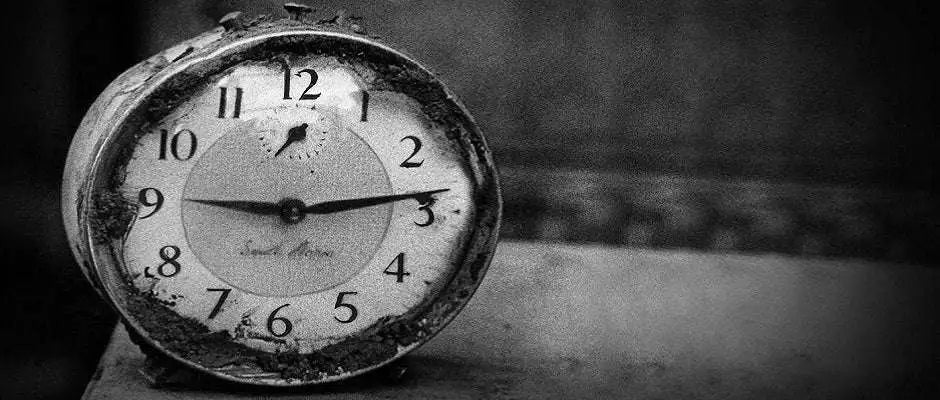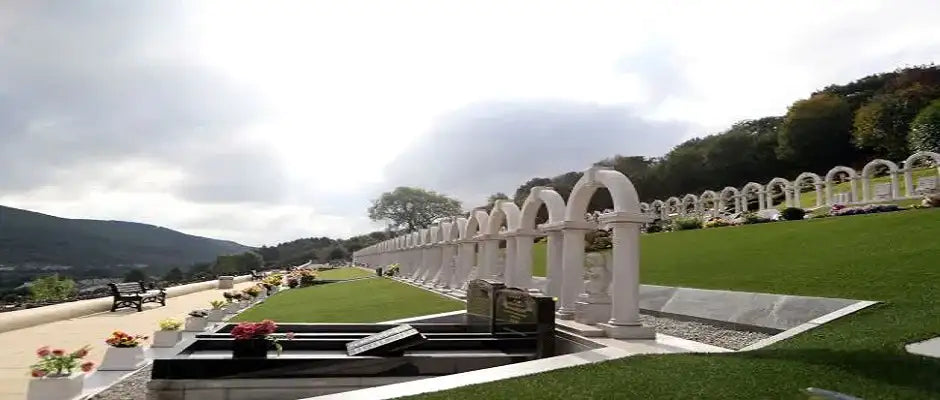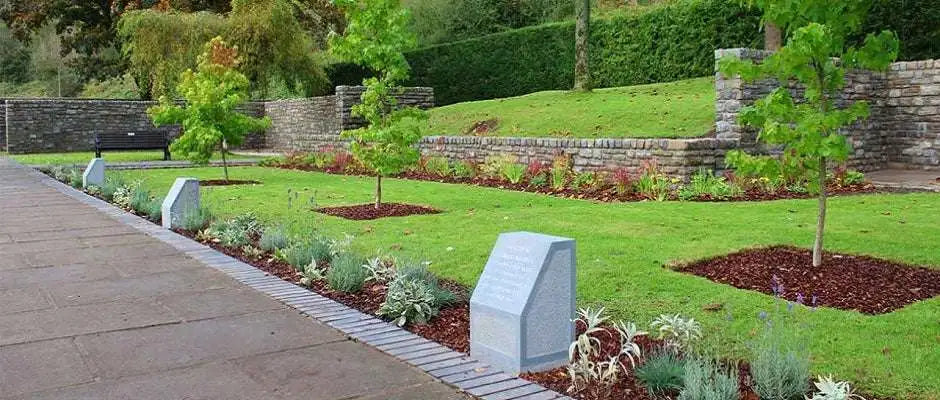Aberfan Disaster
Aberfan Disaster Wales, 21st October 1966
The Aberfan Landslide
The Aberfan clock stopped at 9.13am, 21st October 1966. The image of the stopped clock is a painful memory of that moment in time of the Aberfan tradegy. when a massive colliery tip collapsed. The Aberfan landslide killed 116 children and 28 adults. The Aberfan Disaster - remembered and never forgotten...

Aberfan South Wales on the Map (sat nav postcode CF48 4QA)
Aberfan is a small former coal mining village in the Taff Valley, some 4 miles south of Merthyr Tydfil and 20 miles north of Cardiff, the capital city of Wales. The Aberfan disaster was a catastrophic collapse of a coal tip that engulfed the village.
The ‘Aberfan Disaster’ occurred on the last day before half-term, only minutes after the pupils at Pantglas Junior School had returned to their classrooms from the morning school assembly. They had been singing ‘All Things Bright and Beautiful’. If the disaster had happened just a few minutes earlier, many of the children’s deaths may have been avoided.
Other Historic Days
The Aberfan Clock
The clock was found in the wreckage of one of the destroyed houses, stopped at 9.13am, 21st October 1966. It recorded the actual time the disaster occurred.
Over 50 years later in January 2022, the iconic Aberfan Clock was donated to the St. Ffagans National Museum of Wales. The clock was kept safely at the home of Mike Flynn, the son of Mike Flynn (senior) who attended the scene on 21st October 1966. The clock becomes part of the permanent collection at St. Ffagans for future generations to remember one of Wales’ worst disasters.
When was the Aberfan Disaster
The image of the stopped clock encapsulates that moment in time. At around Friday 9.13am on 21st October 1966, a complete disaster struck this small Welsh mining community which would devastate the village for a generation. A colliery spoil tip on the slopes of Mynydd Merthyr, a broad ridge of high ground above the village containing numerous underground springs collapsed. More than 100,000 tonnes of coal, shale and water formed a forty feet high slurry that flowed down the hill at over 80 miles per hour and engulfed its school, Pantglas Junior School and 18 surrounding houses. The first injured school children arrived at the nearest hospital at 9.50am, St. Tydfil's Hospital in Merthyr Tydfil. The remaining rescued casualties all arrived before 11:00 am. A further 9 casualties were sent to the East Glamorgan General Hospital. Eight-year-old Jeff Edwards was rescued from the school at 11.00am - he was the last person to be rescued. No survivors were found after 11:00 am.
The rescue operation was immense with some 2,000 emergency service workers and volunteers involved. Despite the gallant efforts of those involved, it was nearly a week before all the bodies were recovered.

Aberfan Disaster - How Many Died
On that day 116 children (of the 240 attending school that day) and 28 adults died. Over half of the pupils at the school died on that day and all of them were between the ages of seven and 10. Most of the victims were buried at a joint funeral at the village’s Bryntaf Cemetery on 27th October, which was attended by more than 2,000 people. Of the 144 people who died in the disaster, 109 of the children died inside Pantglas Junior School. Five of the adults who died were teachers at the school. An additional 6 adults and 29 children were injured. The victims ranged in age from three months to 82; of the 116 school children, most were aged 7 to 11.
Rescue Efforts
After the landslide stopped, local residents rushed to the school and began digging through the rubble, moving material by hand, with garden tools or whatever implements they could find. At 9:25 am Merthyr Tydfil police received a phone call from a local resident who said "I have been asked to inform that there has been a landslide at Pantglas. The tip has come down on the school". At about the same time, the fire brigade in Merthyr Tydfil also received a call informing them of the disaster.
The first miners from the Aberfan colliery arrived within 20 minutes of the disaster, having been raised from the coal seams where they had been working. They directed the early digging, knowing that unplanned excavation could lead to collapse of the spoil and the remnants of the buildings; they worked in organised groups under the control of their pit managers.
The first casualties from the wreckage of the school arrived at St Tydfil's Hospital in Merthyr Tydfil at 9:50 am; the remaining rescued casualties all arrived before 11:00 am: 22 children, one of whom was dead on arrival, and 5 adults. A further 9 casualties were sent to the East Glamorgan Hospital.
The 10:30 am BBC news summary led with the story of the accident. The result was that thousands of volunteers travelled to Aberfan to help, although their efforts often hampered the work of the experienced miners or trained rescue teams.
Official Enquiry into the Aberfan Disaster
An official enquiry began on 26th October to examine the causes of the Aberfan disaster, and it lasted 76 days. The National Coal Board (NCB) Chairman Lord Robens subsequently accepted that the Coal Board and nine named employees were responsible. The official enquiry made the following comments;
- the disaster was caused by the ‘total absence of tipping policy’.
- Lord Justice Davies, the official enquiry chairman, described the disaster “a terrifying tale of bungling ineptitude by many men charged with tasks for which they were totally unfitted, of failure to heed clear warnings, and of total lack of direction from above.”
- Lord Robens offered his resignation, but it was rejected. He claimed the NCB had no obligation to remove the remaining tips! The remaining tips were removed but only after a government grant of £200,000 was provided to the Coal Board.
The tribunal concluded that the National Coal Board was responsible for the disaster after examining 300 exhibits and interviewing 136 witnesses. “The Aberfan disaster could and should have been prevented,”. The disaster was a matter “not of wickedness but of ignorance, ineptitude and a failure in communications,”. Damning criticism indeed!
Aberfan Disaster Memorial
The shocking images of that day were broadcast worldwide, and a fund was established which raised £1.75 million. Shamefully, this disaster fund was pressured by the Wilson Labour government to give a further £150,000 to help to remove the tips at Aberfan. This injustice was reversed by the Tony Blair Labour government in 1997 and the £150,000 was repaid.
Today a memorial to the adults and children who lost their lives has been established in Aberfan.
About FelinFach
Located in Pembrokeshire Wales, our ethos is defined in the three words...
NATURAL TRADITIONAL HANDMADE.
- Hand woven iconic Welsh blankets.
- Hand dyed yarn, dyed with natural dyes only - no exceptions!
- Hand poured candles, candle accessories, Candle Making Workshops and soapery.
- Natural Dyeing Craft courses.
- Yarn shop, yarn bowls, project bags, tools and accessories for knitters and crafters.
- Welsh Gifts, made in Wales, handmade in Wales.
We are a proud supporter of Americymru the Campaign for Wool, Global Welsh and Red Dragon America.
Other FelinFach Pages
Last updated 11th October 2024













